- Lions in the Piazza
- Posts
- An Exquisite Temple in India
An Exquisite Temple in India
Hello everyone,
Sorry for the lag time – we've been having problems with our newsletter provider and are aware that some of you have not received even a welcome email! We are searching for a service better suited to our needs; trying to do this on a budget has been more than a little challenging.
Featured Building: Ranakpur’s Jain temple complex
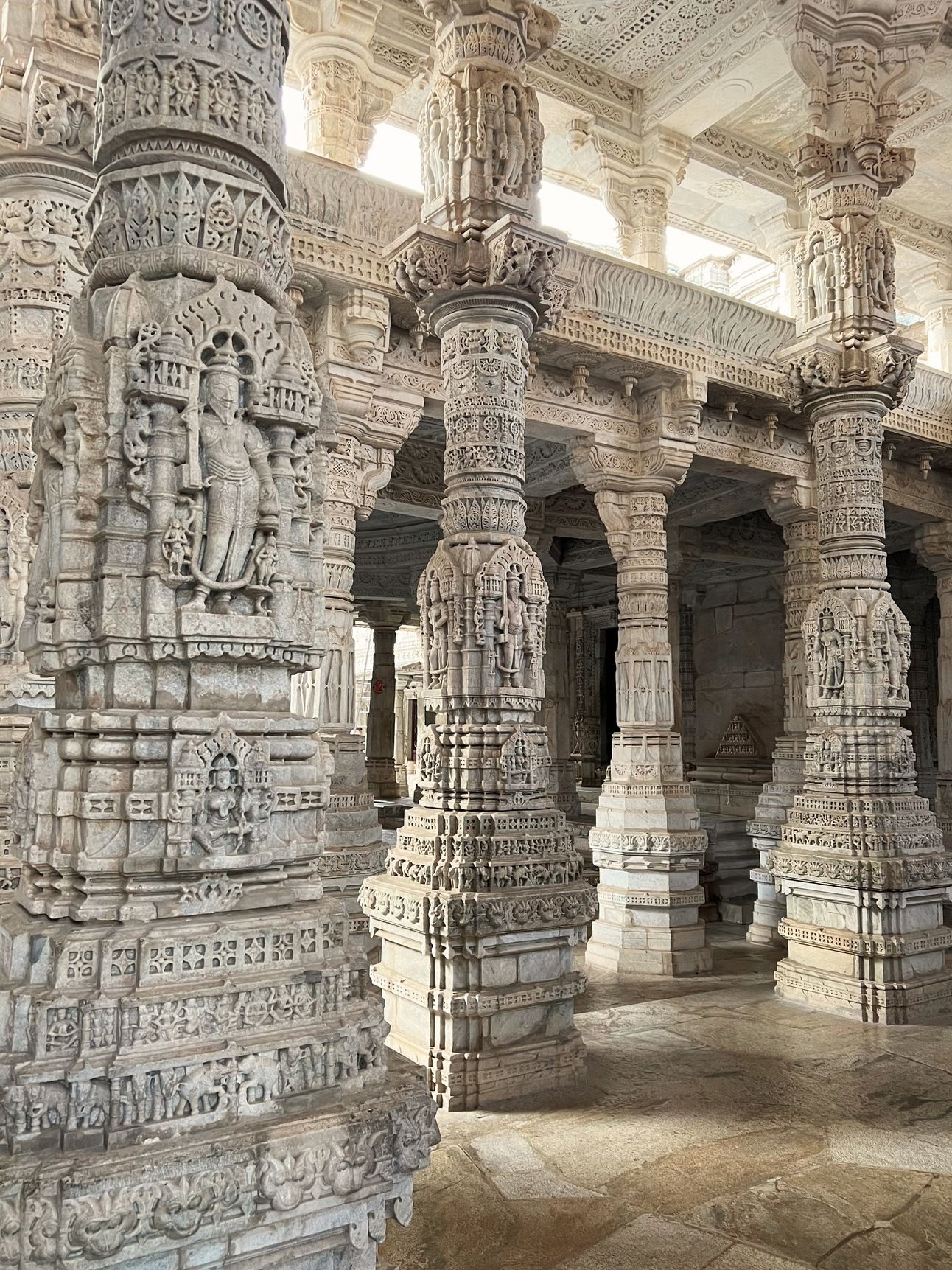
A year ago today we left for a three week trip to India. We’d wanted to visit for decades and it exceeded our expectations – especially the architecture. One of the buildings we still haven’t gotten over is the Jain temple complex in Ranakpur, Rajasthan.
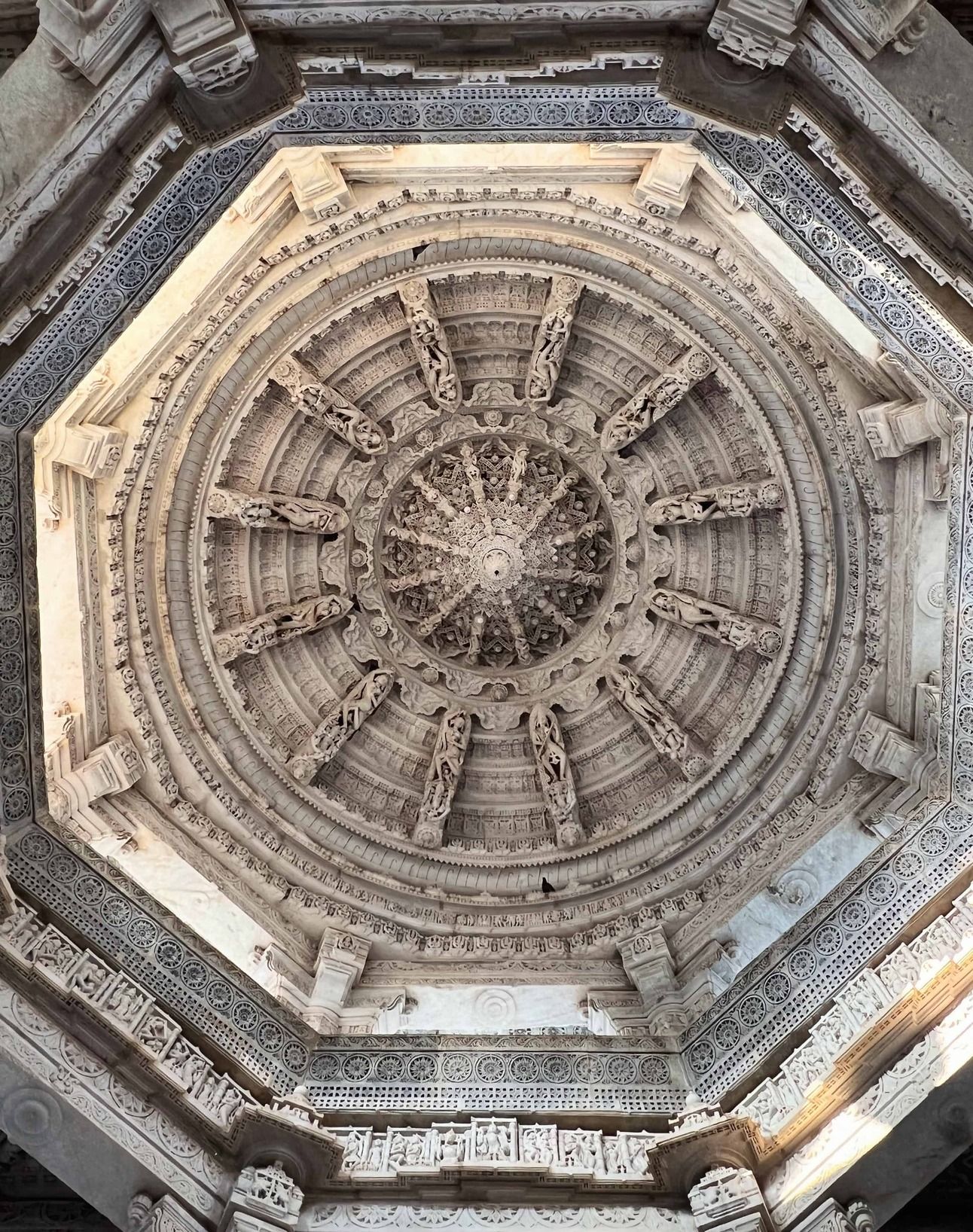
A quick primer on the Jain religion: Jainism developed roughly 2,500 years ago in India and shares many principles and practices with Hinduism and Buddhism. All three belief systems view life as a cycle, with reincarnation based upon one’s karma. Nonviolence to all living things is paramount for Jains, and many went into metalsmithing and finance to avoid harming animals in traditional agriculture practices. Ironically, the community has been ranked among India’s wealthier segments, although the religion looks down upon worldly possessions.
Today there are close to five million adherents of Jainism, the vast majority in India. Although they represent well under 1% of the nation’s population, the Jains make a strong presence in central and western states like Maharashtra, Rajasthan, and Gujarat. Spiritual guidance is based upon the lives of 24 Jain teachers, called tirthankaras, the last of whom is believed to have lived in the sixth century BCE. Visitors to Jain temples are not allowed to bring in any items associated with animals such as leather.
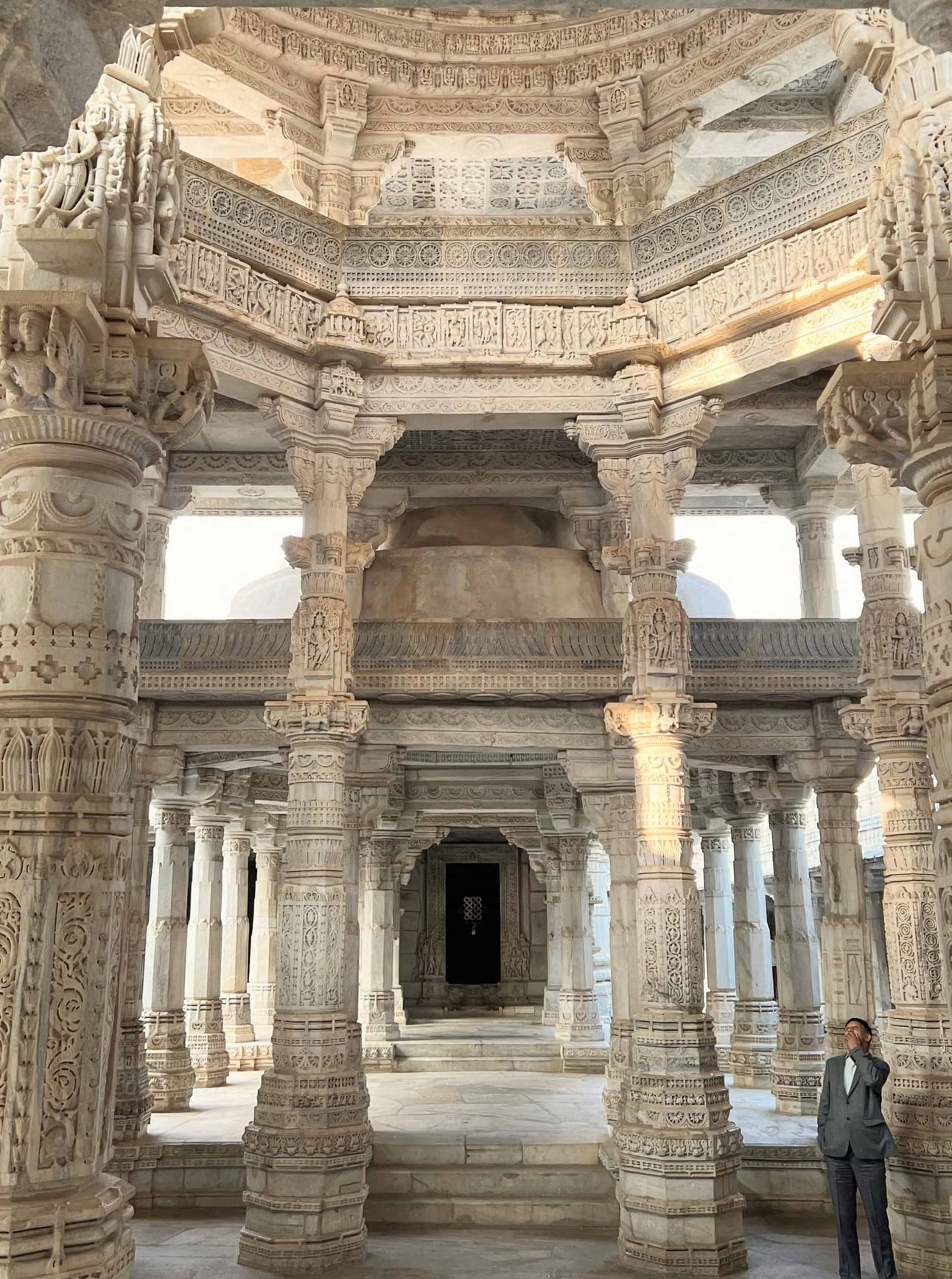 | 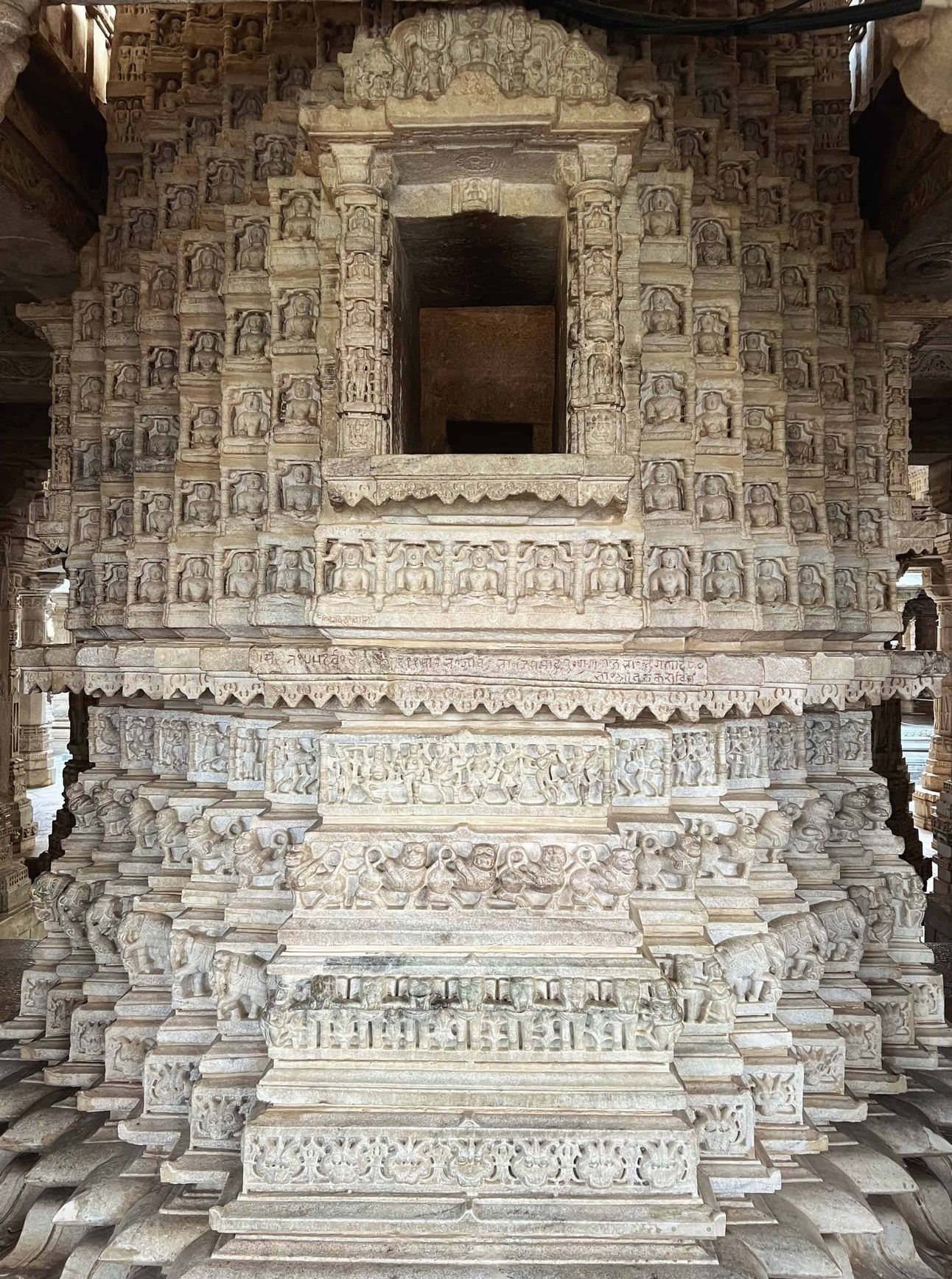 |
If we had to recommend a single temple in Rajasthan, it would be the main structure in Ranakpur’s Jain complex. (There are also three smaller temples.) At over 4,500 square meters (48,000 square feet), it’s one of the largest Jain temples anywhere, as well as one of the five holiest. 1,444 distinct pillars support dozens and dozens of shikharas, domes, cupolas, and turrets, all carved in pristine white marble. Along with 426 columns, the pillars support 80 domes in 29 halls. Such a multitude allows for seemingly infinite variety, while the pure white marble used throughout brings unity to the whole. Every detail has its place, but the organization feels fluid rather than restrictive.
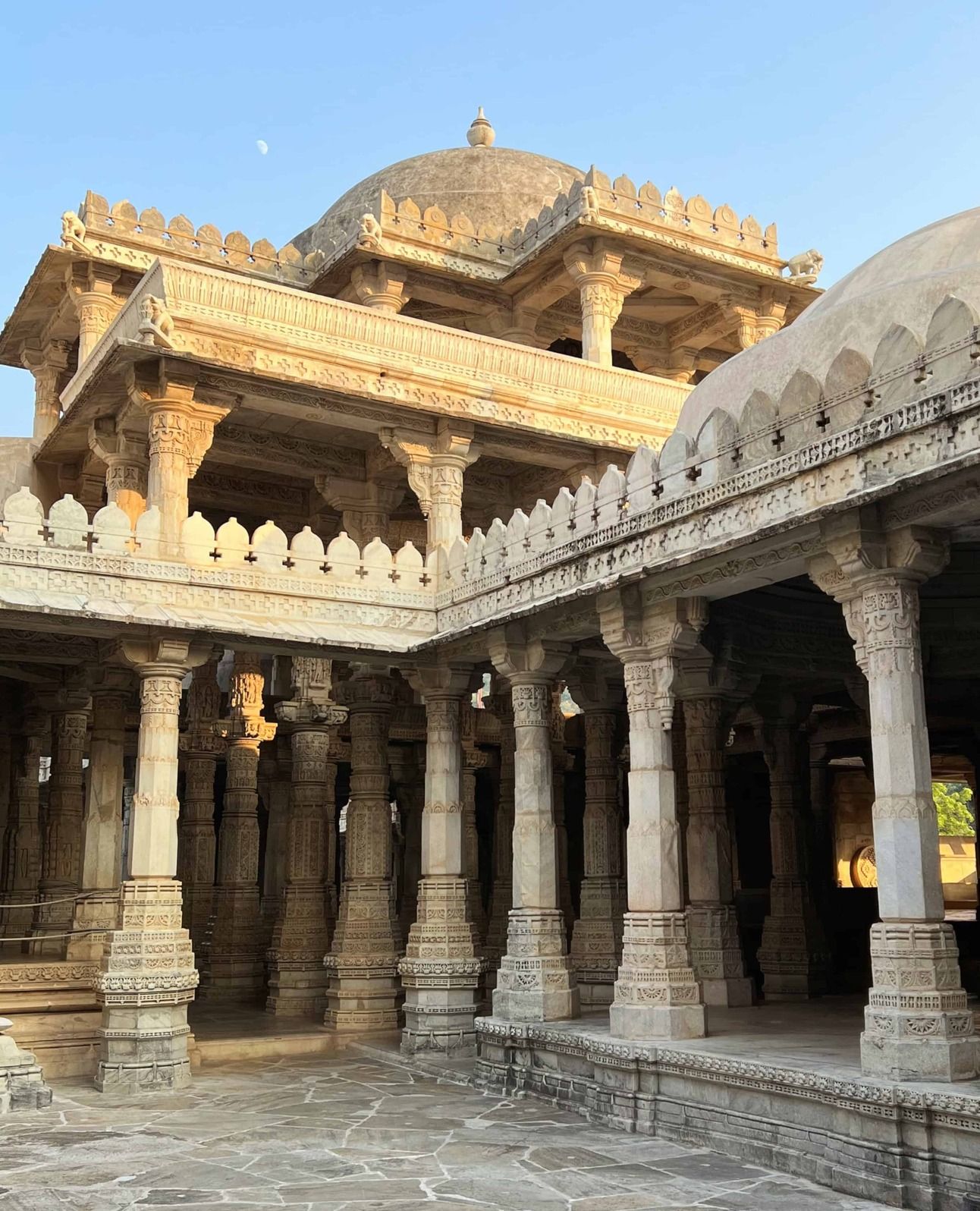 | 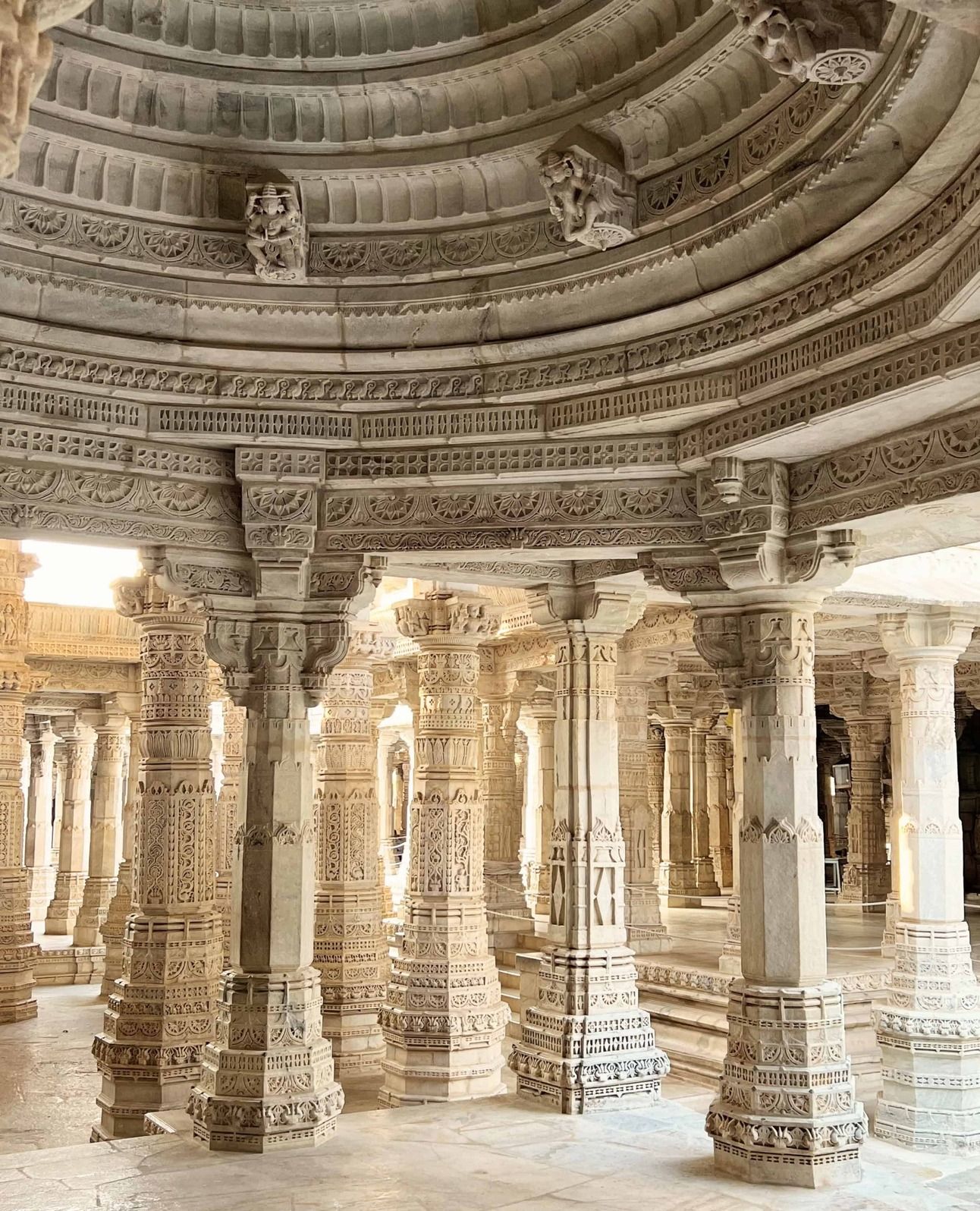 |
The 15th-century design is a culmination of the regional Solanki style which takes intricacy to astounding levels. Traditional temple forms such as the curved pyramidal shikara are entirely covered in row upon row of carvings. They swarm across folding walls, wrap around pillars, and form delicate mandalas on domed ceilings. Details include sinuous diagonal lines called flying arches and a pair of demon-like heads guarding entry steps.
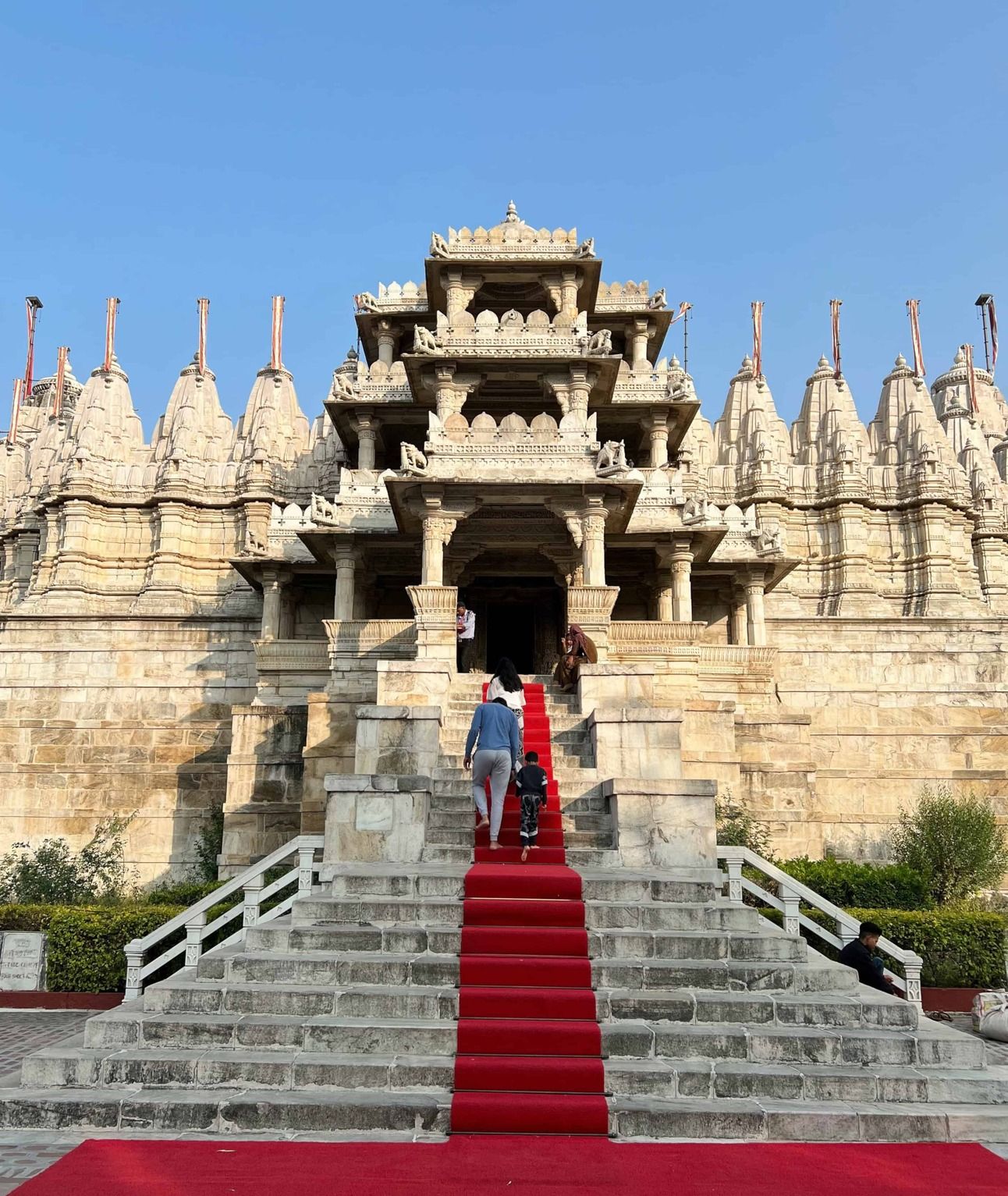 | 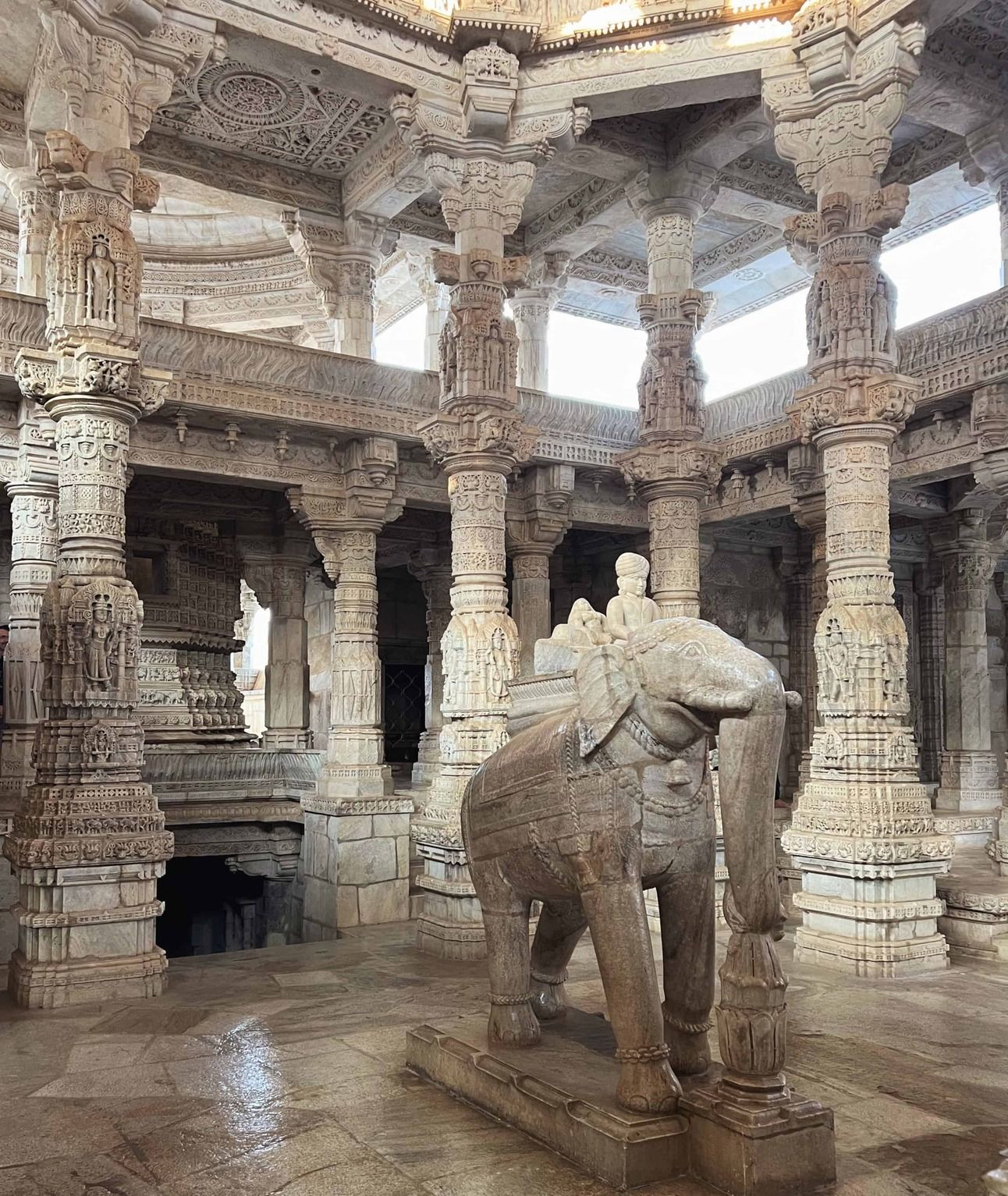 |
The style became especially popular with the Jain community, whose temples can appear almost interchangeable with Hindu architecture. The easiest way to distinguish between the two is to look over the main doorway: Hindu temples will have a statue of Ganesh, while Jain temples will feature one of the religion’s 24 teachers.
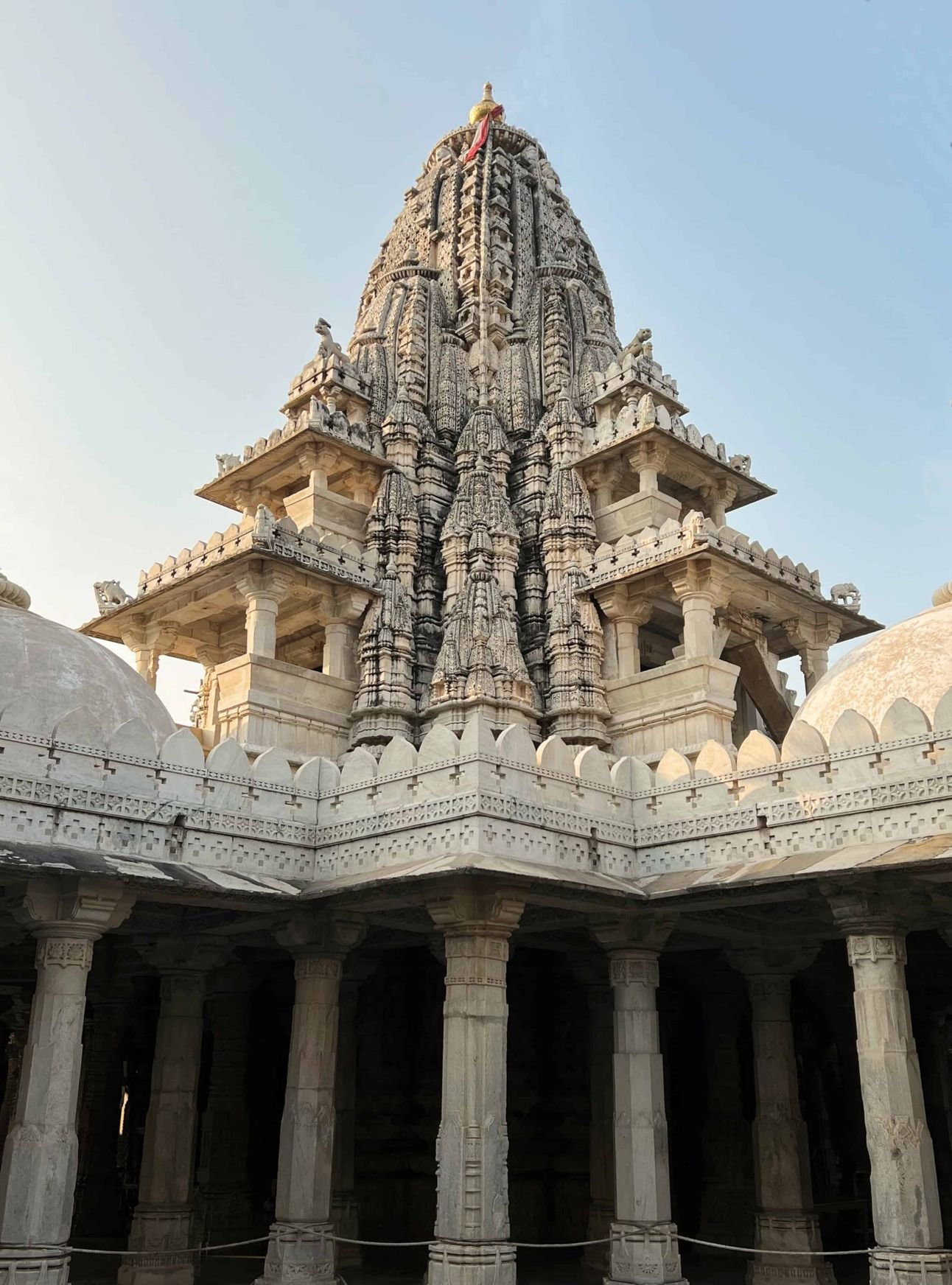 | 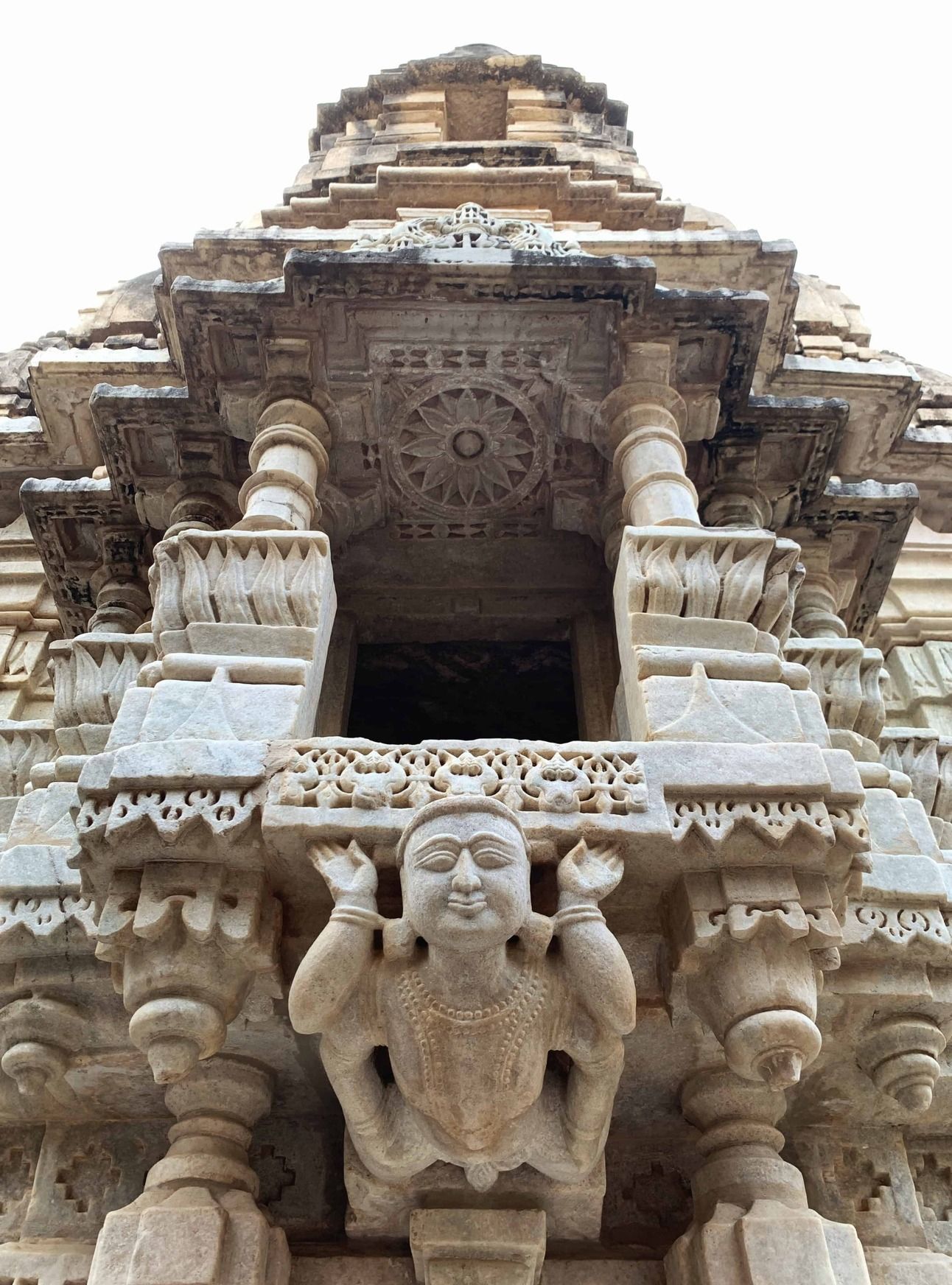 |
We’ll have more on India coming soon. Meanwhile, see our posts:
Lions in the Piazza News
We have new posts on the blog from our recent trip to Italy:
We appreciate your patience as we get this newsletter up and running! Previous editions are posted on our archive page on beehiiv. As always, we welcome questions, comments, and requests.
Mary & Sarah